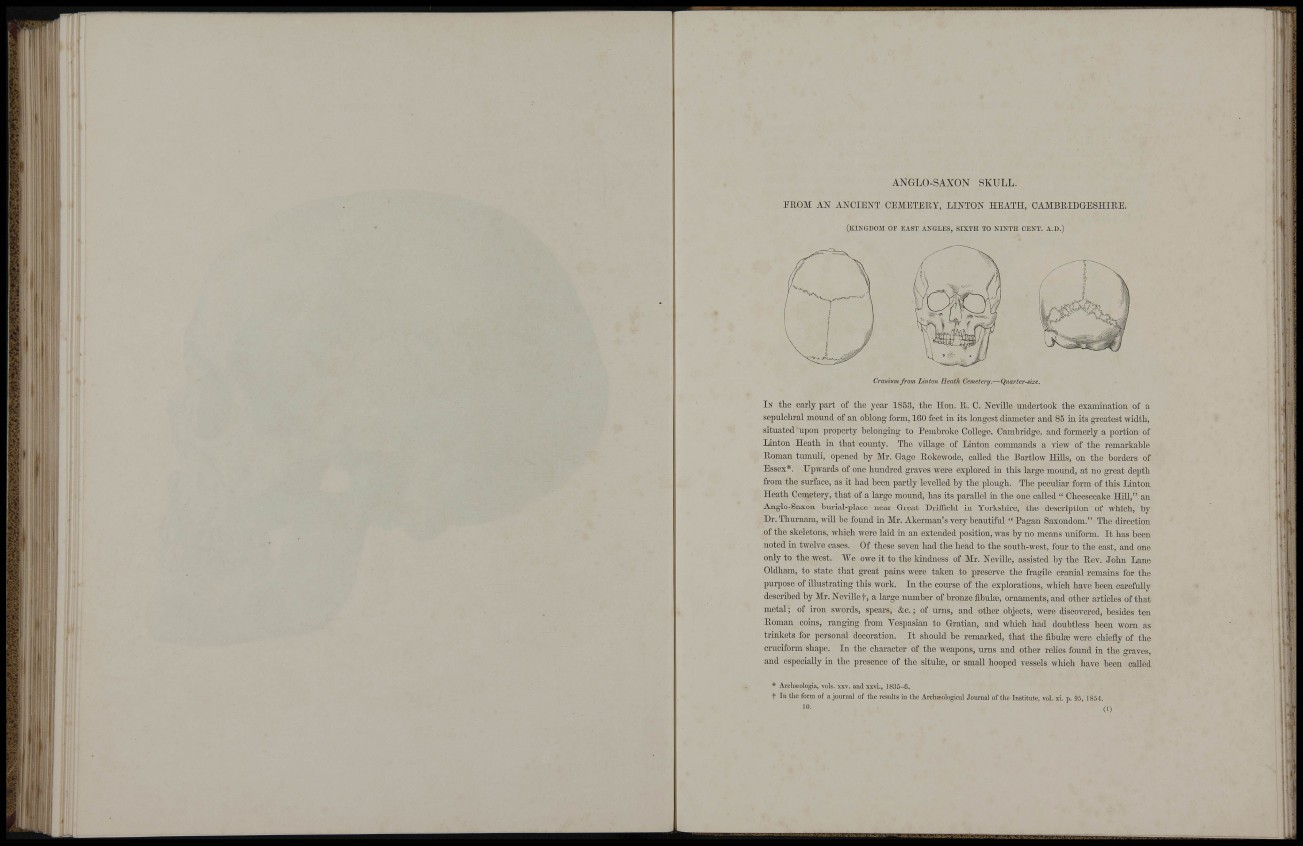
iij 111;
MI
t !
5i . "i- i
III
A N G L O - S A X O N SKULL.
FROM AN ANCIENT CEMETERY, LINTON HEATH, OAMBRIBGESHIRE.
(KINGDOM OF BAST ANGLES, SIXTH TO NINTH CENT, A.D.)
Cranivm from Linton Beath Cemetery.—Quarter-size.
IN the early part of the year 1853, the Hon. R. C. NeTiUe undertook the examination of a
sepulchral mound of an oblong form, 160 feet in its longest diameter and 85 in its greatest width,
situated upon property belonging to Pembroke CoUege, Cambridge, and formerly a portion of
Linton Heath iii that coimty. The v^iUage of Linton commands a view of the remarkable
Roman tumuli, opened by Mr. Gage Rokewode, called the Bartlow Hills, on the borders of
Essex*. Upwards of one hundred graves were explored in this large mound, at no great depth
from the sui-face, as it had been partly levelled by the plough. The peculiar form of this Linton
Heath Cemetery, that of a laxge mound, has its parallel in the one called " Cheesecake HiU," an
Anglo-Saxon burial-place near Great Drifleld in Yorkshii-e, the description of which, by
Dr. Thurnam, will be found in Mr. Akerman's very beautifiLl " Pagan Saxondom." The direction
of the skeletons, which were laid in an extended position, was by no means imiform. It has been
noted in twelve cases. Of these seven had the head to the south-west, foui' to the east, and one
only to the west. We owe it to the kindness of Mr. Neville, assisted by the Rev. John Lane
Oldham, to state that great pains were taken to preserve the fragile cranial remains for the
purpose of illustrating this work. In the course of the explorations, which have been carefully
described by Mr. Neville t, a large number of bronze fibulae, ornaments, and other articles of that
metal; of iron swords, spears, &c.; of urns, and other objects, were discovered, besides ten
Roman coins, ranging from Vespasian to Gratian, and which had doubtless been worn as
trinkets for personal decoration. It should be remarked, that the flbulEB were chiefly of the
cruciform shape. In the character of the weapons, urns and other relics found in the graves,
and especially in the presence of the situlse, or small hooped vessels which have been called
* AvcliEeologin, vols. xxv. and xsvi., 1835-6.
t In the form of a journal of the results in the Archaeological Journal of the Institute, TOI. xi. p. 95, 1854.
10. (,)
<i
1'
4
' i":
;: